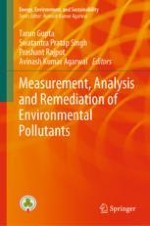2020 | OriginalPaper | Buchkapitel
10. Spatial Variation of Airborne Allergenic Fungal Spores in the Ambient PM2.5—A Study in Rajkot City, Western Part of India
verfasst von : Charmi Humbal, Sneha Gautam, Suneel Kumar Joshi, Mahendrapal Singh Rajput
Erschienen in: Measurement, Analysis and Remediation of Environmental Pollutants
Verlag: Springer Singapore
Aktivieren Sie unsere intelligente Suche, um passende Fachinhalte oder Patente zu finden.
Wählen Sie Textabschnitte aus um mit Künstlicher Intelligenz passenden Patente zu finden. powered by
Markieren Sie Textabschnitte, um KI-gestützt weitere passende Inhalte zu finden. powered by
